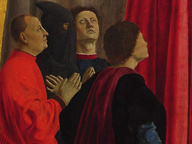Inferno

Dal 15 October 2021 al 23 January 2022
Roma
Luogo: Scuderie del Quirinale
Indirizzo: Via Ventiquattro Maggio 16
Orari: tutti i giorni dalle 10.00 alle 20.00. FESTIVITÁ NATALIZIE: 24 e 31 dicembre dalle 10.00 alle 15.00, 25 dicembre e 1° gennaio dalle 16.00 alle 20.00. L’ingresso è consentito fino a un’ora prima dell’orario di chiusura
Curatori: Jean Clair e Laura Bossi
Prolungata: fino al 23 gennaio 2022
Costo del biglietto: Intero € 15,00 Ridotto € 13,00 Over 65 € 10,00 Gratuito under 6 Giovani 6-17 anni € 2,00 Diritto di prenotazione intero, ridotto e promozioni: € 2,50. Audioguida gratuita disponibile sull’APP delle Scuderie del Quirinale
Telefono per informazioni: +39 02 92897722
E-Mail info: info@scuderiequirinale.it
Sito ufficiale: http://www.scuderiequirinale.it
La mostra, inaugurata il 13 ottobre dal Presidente della Repubblica Sergio Mattarella, indaga l’universo infernale, i suoi paesaggi e suoi abitanti, raccontandone la fortuna iconografica nel corso dei secoli, così da offrire una nuova interpretazione all’immaginario visuale del poeta fiorentino che di quell’universo ha elaborato nella Commedia una vera e propria mappa mentale e simbolica.
Un progetto ambizioso che, concentrandosi sulla prima delle tre cantiche della Divina Commedia, da sempre la più rappresentata, si propone di evidenziare il senso ultimo del grande affresco teologico-allegorico di Dante: indicare all’umanità un percorso di liberazione dalle miserie e dagli orrori de «l’aiuola che ci fa tanto feroci» (Par. XXII, 151) verso una condizione di felicità e di salvezza.
Prima grande rassegna d’arte dedicata a questo tema, Inferno racconta la persistenza dell’iconografia del mondo dei dannati dal Medioevo ai nostri giorni attraverso più di duecento opere d’arte, concesse in prestito da oltre ottanta tra grandi musei, raccolte pubbliche e prestigiose collezioni private provenienti dall’Italia e dal Vaticano, nonché da Francia, Regno Unito, Germania, Spagna, Portogallo, Belgio, Svizzera, Lussemburgo, Bulgaria.
Asse portante dell’intero percorso espositivo, la visione di Dante sul mondo ultraterreno volta ad interrogarsi sull’evoluzione storica del concetto del Male e della sua condanna nell’aldilà.
La mostra affronta tematiche e soggetti distinti, secondo una cronologia trasversale: l’origine dell’inferno come regno di Lucifero, il Giudizio che condanna i dannati a dimorarvi in eterno dopo la morte, la topografia del cono infernale, la natura multiforme del Diavolo e le tentazioni con cui cerca di attrarci, sino alla traslitterazione terrena dell’inferno nelle devastazioni della guerra, nell’angoscia della reclusione, nel lavoro alienante e tossico, nel buio della follia, nell’incubo dello sterminio.
Oltrepassato il culmine del Male, la mostra troverà la sua conclusione con l’evocazione dell’idea di salvezza, affidata da Dante all’ultimo verso della Cantica: e quindi uscimmo a riveder le stelle.
Una sezione tutta dedicata al salvifico impulso, proprio non solo del Cristianesimo ma di ogni Umanesimo, a risollevare lo sguardo verso l’alto - l’universo, l’infinito, l’assoluto, Dio. Un gesto di liberazione poetica e di salvezza dagli incubi claustrofobici dell’inferno , che indica la via per la riconquista di una nuova umanità.
Un’occasione unica per ammirare opere di valore storico-artistico assoluto, a cominciare dalla Voragine infernale di Sandro Botticelli, mirabile dipinto su pergamena eseguito dal Maestro per illustrare la Divina Commedia, oggi smembrato. Il foglio con la raffigurazione dell'Inferno dantesco è stato eccezionalmente concesso in prestito dalla Biblioteca Apostolica Vaticana per le prime due settimane della mostra.
In assoluto il capolavoro più celebre ed emblematico di tale iconografia.
Tra le opere più spettacolari, la versione in gesso della monumentale e celeberrima Porta dell’Inferno di Auguste Rodin (modello di fusione in scala 1:1), realizzata nel 1989 per la fusione di uno degli ultimi esemplari bronzei dell’opera. Concesso in prestito dal Musée Rodin di Parigi, il colossale manufatto, alto 7 metri e collocato all’inizio del percorso espositivo, rappresenta il vertice delle riflessioni artistiche di tutti i tempi sul poema di Dante.
Tra gli altri capolavori, il Giudizio Finale di Beato Angelico, Le tentazioni di Sant’Antonio Abate di Jan Brueghel, Luciferodi Franz Von Stuck, Sternenfall di Anselm Kiefer.
E ancora, il celebre Demonio di Valladolid in legno policromo, la maestosa tela di quattro metri di Gustave Doré Virgilio e Dante nel IX girone dell’Inferno fino al Teatrino napoletano “Inferno” con pupi catanesi e palermitani, proveniente dal Museo internazionale delle marionette Antonio Pasqualino di Palermo.
Significative le numerose collaborazioni istituzionali tra cui quelle con le Gallerie degli Uffizi, il Musée d’Orsay ma anche la Royal Academy di Londra, la Bibliothèque Nationale de France, il Museo Nacional de Escultura di Valladolid, il Museu Nacional de Arte Antiga di Lisbona.
Dopo il grande successo della mostra su Raffaello, le Scuderie del Quirinale tornano, dunque, a contribuire alle celebrazioni di un altro rilevante anniversario della cultura mondiale con un evento potente, ambizioso e spettacolare, capace di condurre il visitatore in territori inattesi attraverso la forza delle immagini e la profondità delle idee.
Dichiarazioni:
Mario De Simoni, Presidente e Ad di Ales - Scuderie del Quirinale
“Anche in occasione del settecentesimo anniversario della morte di Dante, le Scuderie del Quirinale partecipano alle celebrazioni nazionali con un grande progetto espositivo.
Inferno è una mostra potente, concentrata su quella che forse è la più celebre, conosciuta e rappresentata delle tre cantiche. La mostra coglie e rappresenta, con la forza dell’iconografia, il totale impulso morale della Commedia, che attraverso una visione apocalittica tende a una prodigiosa azione di redenzione individuale e collettiva, di salvezza finale con il superamento del mondo che mal vive. Non a caso, l’ultima sala si intitola ‘Riveder le stelle’, presentando una impressionante sequenza di capolavori dell’arte e di fotografie da sonde spaziali, in una commovente rappresentazione del cielo stellato.
Un grande sforzo intellettuale, sotto la guida di un sommo storico dell’arte e del pensiero come Jean Clair.
Ma anche un grande sforzo produttivo, per il quale un prezioso ringraziamento va ai partner American Express e Unilever, che hanno deciso di sostenere organicamente e strutturalmente le Scuderie del Quirinale”.
Matteo Lafranconi, Direttore Scuderie del Quirinale
“La prescrizione etica che Virgilio impartisce a Dante alla fine del viaggio, dopo l’incontro con Lucifero e al momento di imboccare l’angusta via d’uscita dall’inferno (‘conviensi dipartir da tanto male’) riflette l’assunto fondativo della Commedia, esplicitato dallo stesso Alighieri nella celebre Epistola a Cangrande della Scala: ‘Removere viventes in hac vita de statu miserie et perducere ad statum felicitatis’, ovvero ‘Strappare le anime dei viventi dalla condizione di incompiutezza e accompagnarle allo stato di grazia’. Impulso morale e insieme ardente messaggio di rinnovamento, invettiva ed esortazione, azione di redenzione individuale e sociale, morale e politica, tale assunto trova la sua iconografia allegorica nel rivedere le stelle e la sua sintesi in un’unica ragione universale: ritrovare la forma dell’umana felicità”.
Jean Clair e Laura Bossi, curatori
“Per celebrare degnamente con una mostra d’arte il settimo centenario della morte di Dante Alighieri, il tema dell’Inferno si è imposto come un’evidenza. Non solo perché rispetto alle altre cantiche è senza dubbio la straordinaria iconografia infernale ad aver maggiormente ispirato gli artisti, con un duraturo impatto sulla cultura visiva europea; ma anche per la sua attualità, in un mondo in cui la distruzione della natura, la crisi sociale e culturale ci inducono a riflettere sul destino dell’umanità e sulle cose ultime.
Che sia espressa nei cupi avvertimenti di sofferenza eterna nelle miniature medievali, nell’incontro con un universo satanico fatto di tragedie terrene nell’arte rinascimentale e barocca, nei tormenti dell’anima raffigurati nelle tele romantiche e simboliste, o nelle moderne interpretazioni psichiatriche del mistero del Male, la credenza in un possibile traguardo di dannazione si è dimostrata straordinariamente persistente, esercitando di volta in volta terrore, pietà, fascino morboso o curiosità ‘scientifica’”.
Iniziative:
Come di consueto, anche in occasione della mostra “Inferno”, le Scuderie del Quirinale propongono ai visitatori un programma di incontri collaterali dal titolo “Infernauti”: una serie di appuntamenti – organizzati anche in collaborazione con prestigiosi istituti internazionali - volti ad approfondire alcuni aspetti peculiari della rassegna che, nel corso dei secoli, hanno contribuito a definire la portata dell’opera dantesca ancora così attuale e determinante per la cultura contemporanea.
Seguendo il percorso tracciato dallo stesso Jean Clair e grazie alla partecipazione di studiosi, specialisti e figure di spicco del mondo della cultura, gli incontri saranno incentrati su alcuni temi-chiave: dalla visione di Dante e dei suoi contemporanei sul mondo degli inferi, fino all’evoluzione storica del concetto del male.
Programma degli eventi collaterali in allegato
SCARICA IL COMUNICATO IN PDF

-
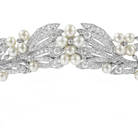 Dal 14 November 2025 al 15 March 2026
Roma | Musei Capitolini
Dal 14 November 2025 al 15 March 2026
Roma | Musei Capitolini
Cartier e il Mito ai Musei Capitolini
-
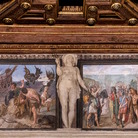 Dal 14 November 2025 al 15 February 2026
Bologna | Palazzo Fava
Dal 14 November 2025 al 15 February 2026
Bologna | Palazzo Fava
Michelangelo e Bologna
-
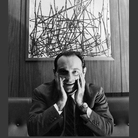 Dal 13 November 2025 al 18 April 2026
Roma | Musei Vaticani
Dal 13 November 2025 al 18 April 2026
Roma | Musei Vaticani
“L’irrefrenabile curiosità”. Capolavori del Novecento dalla Collezione di Leone Piccioni
-
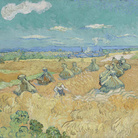 Dal 15 November 2025 al 10 May 2026
Treviso | Museo Santa Caterina
Dal 15 November 2025 al 10 May 2026
Treviso | Museo Santa Caterina
DA PICASSO A VAN GOGH. Capolavori dal Toledo Museum of Art. Storie di pittura dall’astrazione all’impressionismo
-
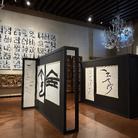 Dal 8 November 2025 al 11 January 2026
Venezia | Museo Correr
Dal 8 November 2025 al 11 January 2026
Venezia | Museo Correr
CARATTERI. Calligrafia e tipografia: Corea del Sud e Stati Uniti
-
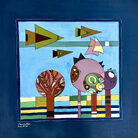 Dal 8 November 2025 al 22 February 2026
Brescia | Museo di Santa Giulia
Dal 8 November 2025 al 22 February 2026
Brescia | Museo di Santa Giulia
Material for an Exhibition. Storie, memorie e lotte dalla Palestina e dal Mediterraneo
